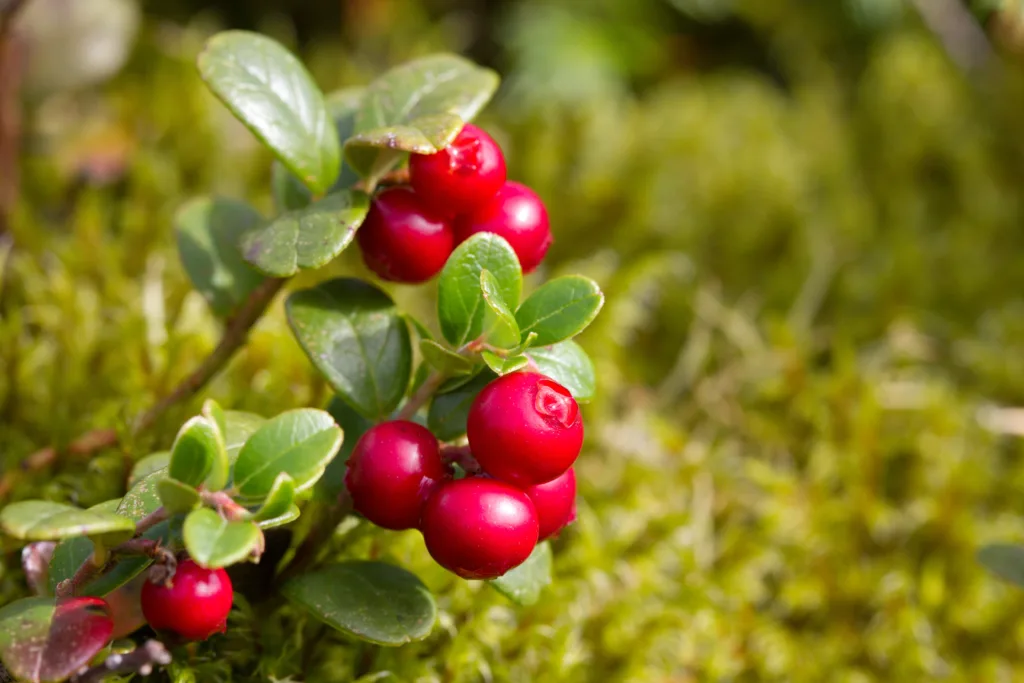Lingonberries are small, tart berries that are native to the boreal forests of the northern hemisphere. They have a unique and distinct taste that sets them apart from other berries.
The taste of lingonberries can be described as tangy and slightly sour. They have a bright, refreshing flavor that is not too sweet. Unlike other berries like strawberries or blueberries, lingonberries have very little natural sugar, which makes their taste more tart and less sweet.
Lingonberries are often compared to cranberries, which have a similar sour and tangy flavor. However, lingonberries are usually a bit less acidic, which makes them slightly sweeter in taste than cranberries.
The tartness of lingonberries makes them a great complement to savory dishes. In Swedish cuisine, lingonberry jam is often served with classic dishes like meatballs and fried herring. The sweetness of the jam helps to balance out the savory flavors of the meat, while the tartness adds a bright and refreshing contrast.
Lingonberries can also be used to make a variety of other dishes, including pies, tarts, and sauces. They can be combined with other fruits or used on their own to create unique and flavorful desserts.
The taste of lingonberries is tart, tangy, and slightly sweet. Their unique flavor profile makes them a great addition to a variety of dishes, and their versatility makes them a popular ingredient in many different cuisines.
Do Lingonberries Taste Like Cranberries?
Lingonberries and cranberries have some similarities in taste due to their tart and tangy flavors. However, lingonberries tend to be slightly sweeter than cranberries, as they are less acidic. Cranberries also have a slightly more bitter taste, which can be attributed to their higher levels of proanthocyanidins. while both berries share some similarities in taste, they also have distinct differences that set them apart from each other.

What Is Lingonberry Similar To?
Lingonberries are similar in size and shape to cranberries and have a comparable sour and tangy taste. They are also similar to bilberries and huckleberries, which are small, dark-colored berries that grow wild in North America and Europe. Like lingonberries, bilberries and huckleberries are also rich in antioxidants and have been used in traditional medicine to treat a variety of ailments. In terms of culinary uses, lingonberries are often used in jams, sauces, and marinades, and are a popular accompaniment to meat dishes in Scandinavian cuisine.
Are Lingonberries And Cranberries Similar?
Lingonberries and cranberries are similar in some ways. They both belong to the same family, Ericaceae, and have a similar tart taste. Both fruits are also used in similar culinary ways, such as in jams, sauces, and baked goods. However, there are also some differences between the two. Lingonberries are smaller and less juicy than cranberries. They are also richer in antioxidants and vitamins. Additionally, lingonberries are commonly found in boreal forests in the northern hemisphere, while cranberries thrive in bogs and seasonally flooded areas. while there are some similarities between the two, they are distinct fruits with teir own unique characteristics.
Is Lingonberry Jam Sweet?
Lingonberry jam is generally considered to be sweet but with a tart flavor. The sweetness comes from the added sugar during the jam-making process, while the tartness is natural to the lingonberry fruit itself. This combination of sweetness and tartness is what makes lingonberry jam a popular condiment to pair with savory dishes such as Swedish meatballs or fried herring. lingonberry jam is a delicious balance of sweet and tart flavors that can enhance the taste of many different dishes.

Conclusion
Lingonberries have a distinct and unique taste that sets them apart from oher berries. They are tart and tangy, with a slightly sweet undertone that makes them a popular ingredient in many Swedish dishes. Compared to cranberries, lingonberries have a milder acidity, which gives them a sweeter taste. Despite their differences, both lingonberries and cranberries are versatile fruits that can be used in a variety of recipes, from jams and sauces to desserts and drinks. Whether you prefer the boldness of cranberries or the subtleness of lingonberries, both fruits offer a delightful burst of flavor that is sure to satisfy your taste buds.
